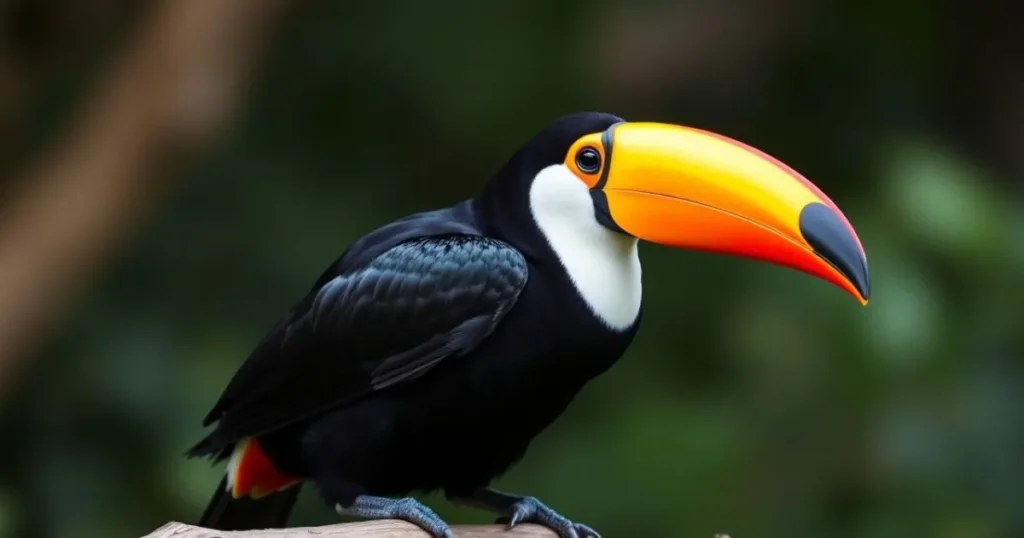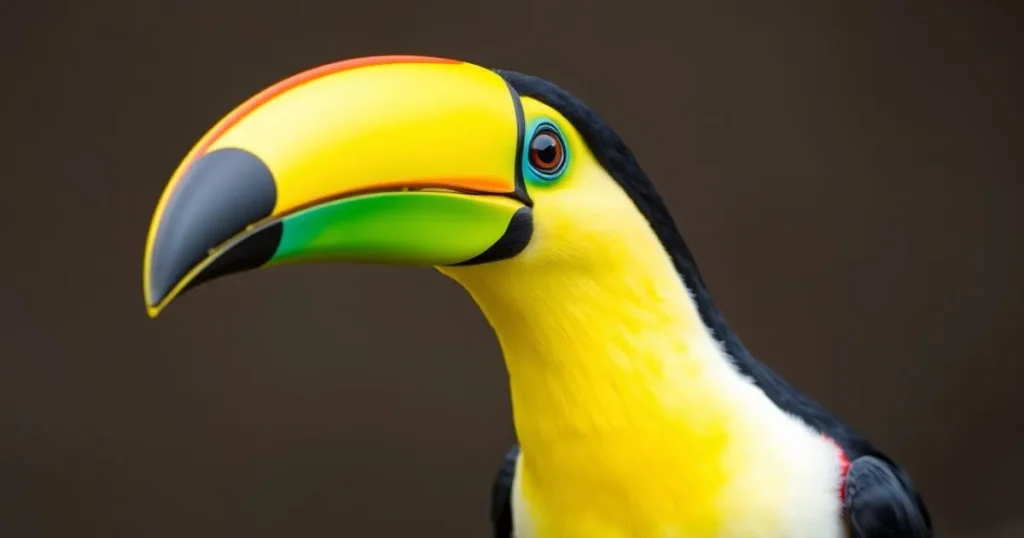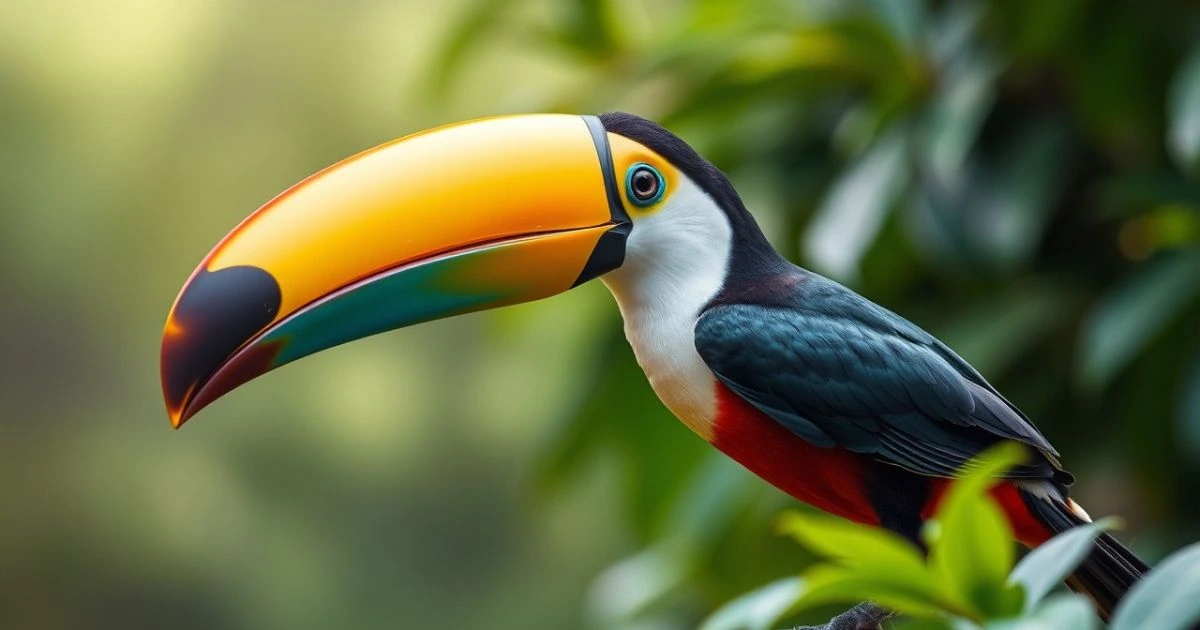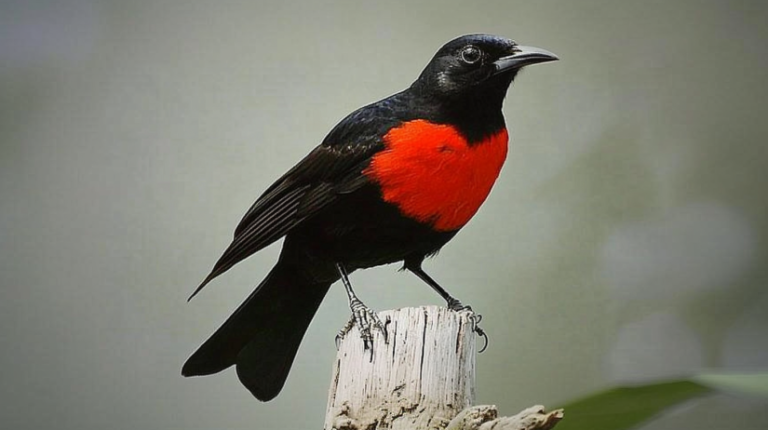The Fascinating Life Cycle of a Toucan: From Hatching to Adulthood
Imagine seeing a colorful toucan in the trees, its bright beak shining as it moves. These birds make the rainforest lively with their colors and fun personalities. But Looks aren’t their only feature.
Every toucan starts as a tiny egg and grows into a majestic bird. This article will show you their journey. You’ll learn about their challenges and what makes them special.
Overview of the Toucan Bird
| Attribute | Details |
|---|---|
| Official Name | Ramphastidae |
| Common Name | Toucan |
| Pet Height | 16–24 inches (40–61 cm) |
| Pet Weight | 0.5–1.5 pounds (226–680 g) |
| Lifespan | 15–20 years |
| Smartness Level | High |
| Engagement in Play | Very Active |
| Human-Friendly | Highly Affectionate |
| Animal-Friendly | Moderate |
| Favorite Food | Fruits (e.g., papayas, bananas) |
Table of Contents
Understanding the Life Cycle of a Toucan: From Egg to Adulthood
Toucans are known for their big, colorful bills. But their journey from egg to adult is just as fascinating. Each stage shows how toucans survive and play a role in their ecosystem.
Egg Stage – The Beginning of a Toucan’s Life
Formation and Laying of the Egg
A toucan’s life starts in an egg. Female toucans lay their eggs in tree cavities. These spots protect the eggs from predators and harsh weather.
They usually lay two to four eggs in a nest. This nest might be an old woodpecker hole or a natural tree cavity. Toucans pick these spots in tropical forests to keep their eggs safe.
Both parents help make the nest safe. They work together to create a cozy space for their eggs. This keeps the eggs hidden from curious animals.
Incubation Period
During incubation, both parents keep the eggs warm. They take turns for about 16 days. This careful attention is crucial for the chicks’ health.
The parents watch the environment closely. Even small changes in temperature or humidity can affect the eggs. Their dedication is key to the chicks’ well-being.
Hatching – The First Step Toward Independence

The Hatching Process
Hatching is a tough start for toucan chicks. They must peck to break free from the shell. Sometimes, they need their parents’ help.
When they hatch, chicks face a new world. It’s exciting but scary. They are far from the safety of their egg.
Initial Appearance and Vulnerability
Newborn toucan chicks are very vulnerable. They are featherless, blind, and need their parents for everything. They look nothing like the colorful adults they will become.
At first, they eat food that their parents regurgitate. This food is mainly fruits and small insects. It supplies the growth nutrients they need.
The Juvenile Stage – Growing Up
Physical Growth and Feather Development
Toucan chicks grow fast as weeks pass. Their feathers start soft, then grow into the bright colors of adult toucans. Their beaks, though small, hint at their future look. At this time, they can’t find food on their own and rely on their parents.
Social Behavior and Play
Toucans love to play and be social, even as young ones. They learn by playing, like how to find food and defend themselves. They also start to talk to each other, which helps them grow into social birds.
Dietary Changes and Introduction to Solid Food
Young toucans start eating solid food as they grow. Their parents teach them to eat fruits and insects. This helps them learn to find food in the wild and grow independent.
Adolescence – Preparation for Adult Life

Physical Maturation and Full Beak Development
Adolescence brings big changes for toucans. Their beaks grow big and colorful. These beaks are strong and help them eat, attract mates, and defend themselves.
Learning Independence
As they grow, young toucans learn to fly and find food on their own. Their parents step back, letting them practice these skills. This is key to surviving in the rainforest.
Establishing Territory and Social Status
Young toucans meet others and start to form groups. They learn their place in the group through play and courtship. This helps them prepare for finding a mate and defending their territory.
Adulthood – A Toucan’s Prime
Physical Characteristics of an Adult Toucan
Adult toucans show off their full beauty. Their beaks are big and colorful, and their bodies are strong for life in the trees. They reach their full size and weight, with females a bit smaller than males.
Mating Rituals and Pair Bonding
Adult toucans show off in courtship dances and songs. These displays help them find partners and form strong bonds. As a pair, they raise their young together.
Feeding Habits of an Adult Toucan
Adult toucans eat a variety of foods, including fruits, insects, and small reptiles. They help spread seeds as they move through the forest. This supports the rainforest’s rich biodiversity, showing how important toucans are to their ecosystem.
Threats and Challenges Throughout the Life Cycle
Natural Predators
Toucans face many dangers at every stage of their life. Snakes and hawks are threats, mainly to young birds and eggs. To stay safe, toucans use their quick movements and hide in well-camouflaged nests. Their parents also keep a watchful eye.
Human Impact and Habitat Loss
Humans are the biggest danger to toucans. Deforestation cuts down their homes and food sources. The illegal pet trade also harms them, as they are captured for exotic pets. Saving their habitats and stopping the pet trade are key to their survival.
Fascinating Toucan Facts
- Toucans are very social and live in small groups for safety.
- Their big bills help them cool down by releasing heat.
- They can live up to 20 years in the wild but often don’t because of habitat loss.

FAQ – Common Questions About Toucans and Their Life Cycle
What is the average lifespan of a toucan?
Wild toucans usually live 12-20 years, depending on their environment.
How big do toucans get when fully grown?
An adult toucan can be up to 24 inches long, with their beaks making up a third of their length.
What do toucans eat during each stage of life?
Chicks eat regurgitated food, then whole fruits and insects as they grow. Adults eat fruits, insects, and small reptiles.
Are toucans endangered?
Not all toucan species are endangered, but habitat loss and the pet trade are big threats to some.
Why do toucans have such large beaks?
Their big beaks help them reach fruit, play in courtship, and keep their body temperature right.
Conclusion: Appreciating the Life Cycle of a Toucan
The toucan’s life is full of wonder and challenges. From egg to adult, they face many dangers. Understanding their life cycle helps us appreciate them and work to save their homes. Next time you see a toucan, think about their amazing journey and how you can help protect them.







